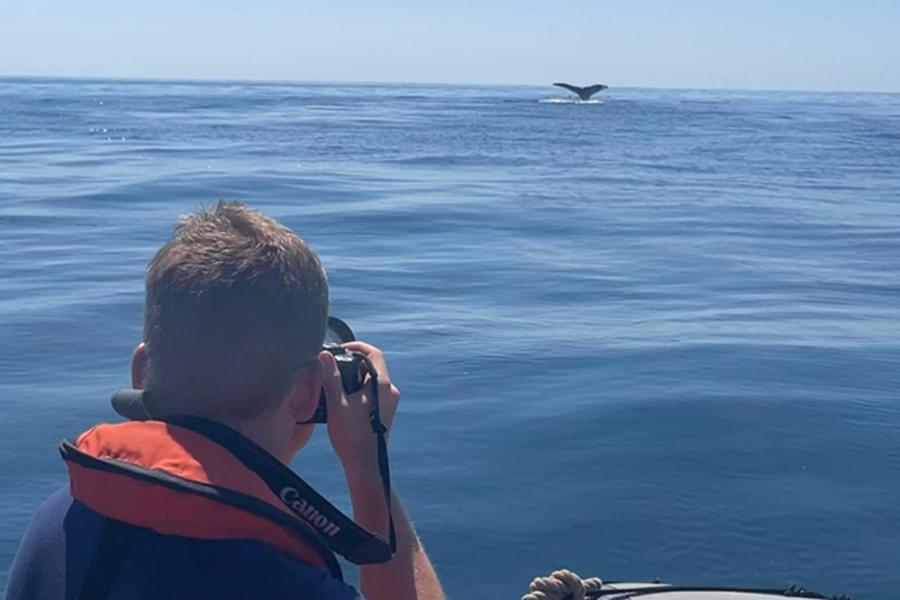We are delighted to have a post voyage guest blog from Thomas Stone, an ORCA Marine Mammal Surveyor and OceanWatcher, about the Seas Your Future project he took part in during January 2022. During his voyage, Thomas used ORCA survey protocols to collect effort, environmental and sightings data about any whales, dolphins and porpoises that are seen.
I have recently returned from a voyage along the Pacific Costa Rican coast on the tall ship ‘The Pelican of London’. As a Scientist in Residence with the organisation ‘Seas Your Future’, I led a project carrying out marine mammal surveys.

I joined the ship in Golfito, a picturesque town in the south of Costa Rica with a spectacular rainforest-edged coastline. After some introductory training for the new crew of Costa Rican students, onboard to learn to sail and improve their English, we set off on the first leg of our trip heading north.
Following a calm first night of sailing, I began my marine mammal surveying. Our first spot was a pod of acrobatic, bow-riding bottlenose dolphins, soon followed by an enthralling sighting of a sperm whale! Sperm whales are some of the deepest diving marine mammals in the world, having been recorded diving to depths of over 2000m.
Sea birds featured predominantly amongst the other wildlife we saw. The most common of these were frigate birds, pelicans and three different species of boobies; brown, red-footed and Nazca. Spectacular mobula rays were also frequently spotted leaping clean out of the water, clumsily flapping through the air before splashing back into the ocean!
We celebrated arriving at our anchorage for the night, the appropriately named ‘Ballena (Whale) Bay’, with a sunset swim off the boat, bringing a suitably tropical end to an amazing first day.
The next day we arrived in the port city of Puntarenas to swap some of the ship’s crew before heading back west, then turning north at nightfall. During daylight hours, a few humpback whales teased us with their presence, their blows being spotted in the distance.
After sailing through the night, we arrived in the Golfo de Papagayo area. This meant the first of our dedicated humpback whale searches from the ship’s RIB could begin. These involved visual scanning from observers onboard the RIB as well as regular stops to use a hydrophone to listen out for any singing humpbacks.
The main aim of these searches was to gain photos of the humpbacks’ tails or flukes which could then be matched to database photos to discover more about their migration routes. On this first search, we were lucky enough to have a breath-taking sighting of two humpback whales but unfortunately, no fluke pictures were possible as the whales refused to show their tails! The wait continued…
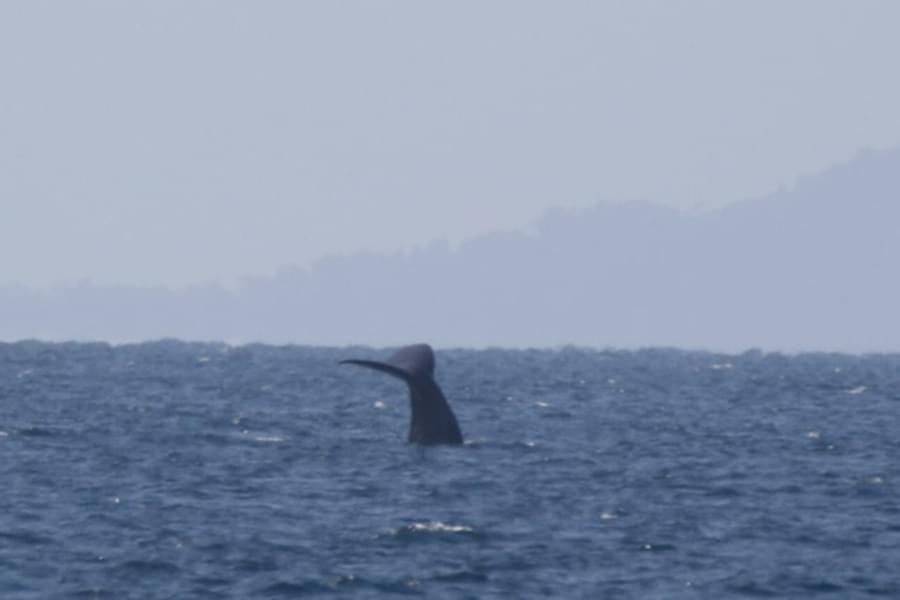
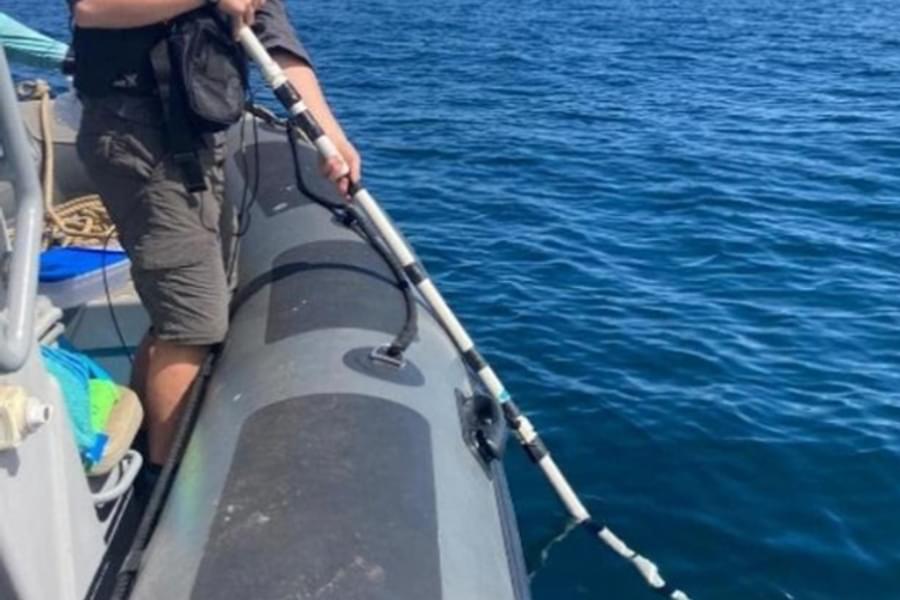
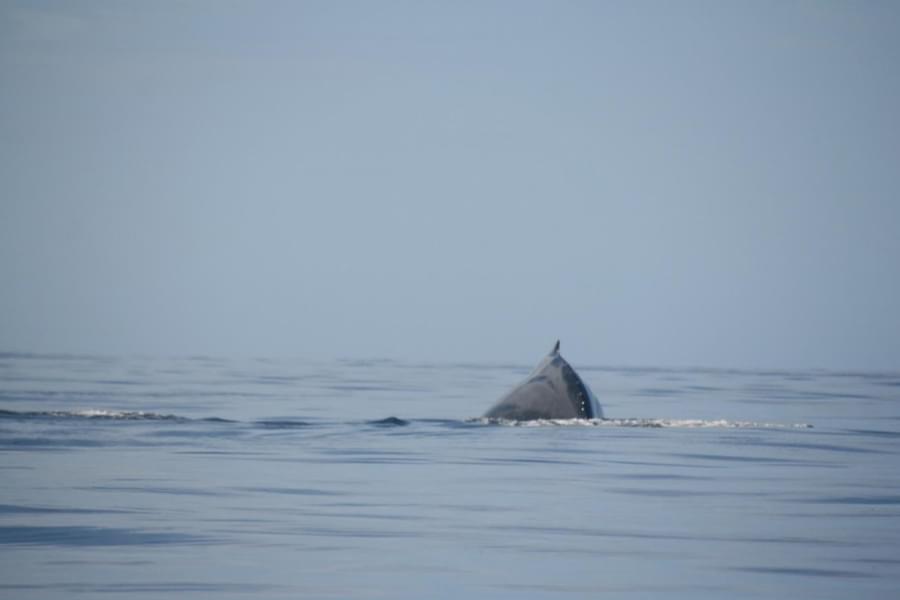
The next few days were spent sailing around the Golfo de Papagayo area carrying out more marine mammal surveys. Numerous pantropical spotted dolphin pods were sighted along with some captivating olive ridley sea turtles, but sadly no more humpback whales were seen.
As our voyage neared its end we headed back south. We had an incredible sighting of a humpback whale breaching in the distance, but once again it was gone before we could get any pictures. So close!
Our last night at sea was one I will never forget. As a pod of spotted dolphins approached the ship they were lit up by bioluminescence in the water. They chased fish, leaving sparkling trails behind them like fairy dust! A truly magical sight.
Rising with the tropical sun the next morning we were greeted by pods of bottlenose dolphins and later more pantropical spotted dolphins. With conditions optimal, we decided to launch the RIB for a final humpback whale search. After just fifteen minutes, a group of three humpbacks were spotted; two adults and a calf! These whales were being followed by a group of spotted dolphins which were attempting to steal droplets of milk from the mother humpback whale as she fed her calf. What a way to finish the voyage!
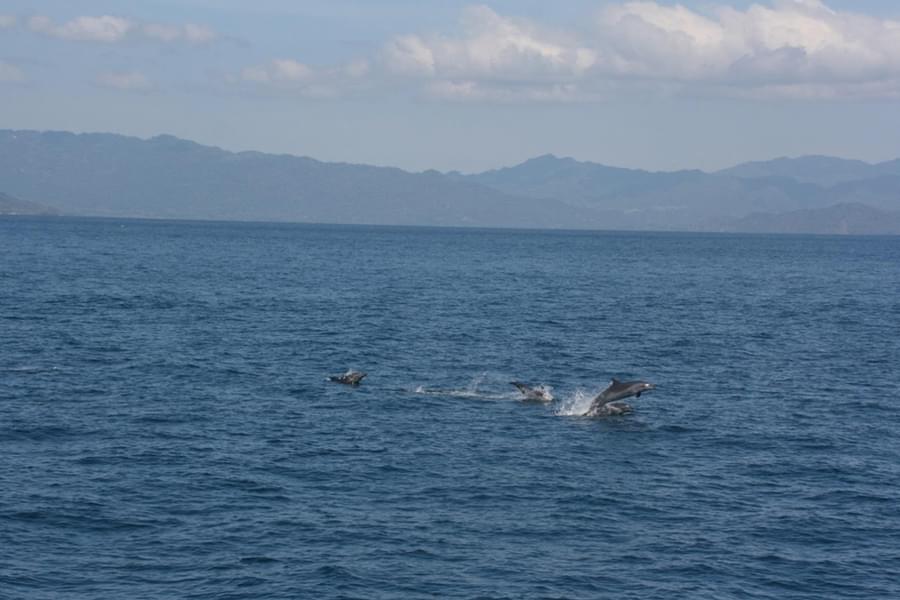
As our voyage neared its end we headed back south. We had an incredible sighting of a humpback whale breaching in the distance, but once again it was gone before we could get any pictures. So close!
Our last night at sea was one I will never forget. As a pod of spotted dolphins approached the ship they were lit up by bioluminescence in the water. They chased fish, leaving sparkling trails behind them like fairy dust! A truly magical sight.
Rising with the tropical sun the next morning we were greeted by pods of bottlenose dolphins and later more pantropical spotted dolphins. With conditions optimal, we decided to launch the RIB for a final humpback whale search. After just fifteen minutes, a group of three humpbacks were spotted; two adults and a calf! These whales were being followed by a group of spotted dolphins which were attempting to steal droplets of milk from the mother humpback whale as she fed her calf. What a way to finish the voyage!

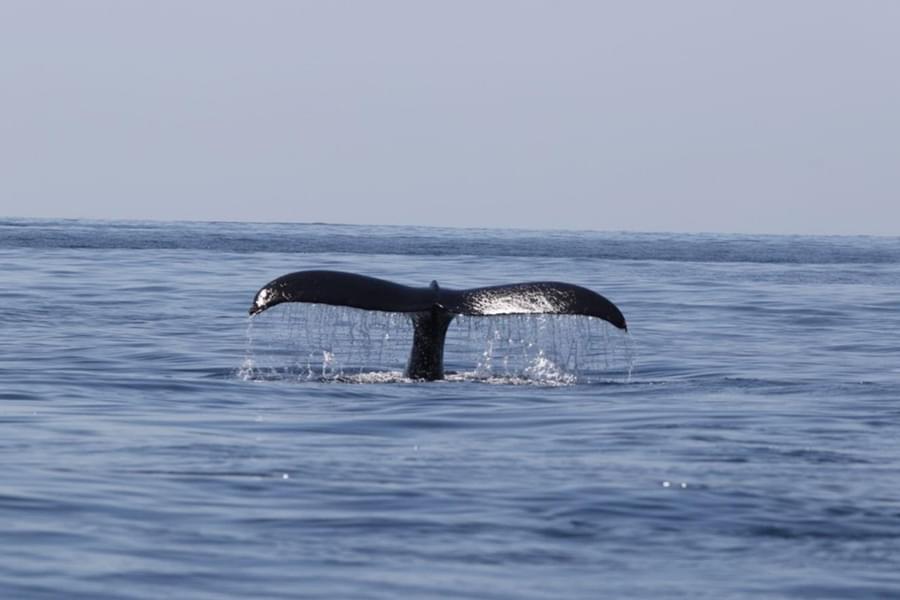
Excitingly, the photos we managed to take of the adult whales’ tails during this last sighting, have been matched to individuals from an international database. According to the database, the mother humpback has been spotted seventeen times since she was first sighted in 1994, twenty-eight years ago. She migrates to Costa Rica annually from the coast of California but had not been spotted here since the year 2000! This was the third time the other adult had been spotted and the first time it had been seen in Costa Rican waters, having also previously been sighted off the Californian coast and near Mexico whilst on its migration route.

Overall, the voyage was an incredible experience; getting to know so many amazing people onboard and seeing so much of the abundant Costa Rican wildlife. I am left with feelings of awe and an even stronger love for our oceans, and a heightened awareness of the ever-growing need for us all to protect and treasure them and their inhabitants.
I am very grateful to ‘Seas Your Future’ for giving me the opportunity to carry out this project. For more information about the work ‘Seas Your Future’ does in the areas of ocean science, sail training and maritime careers, visit their website (https://www.seasyourfuture.org/) or follow them on social media @SeasYourFuture on Twitter or Instagram, or @adventureundersail on Facebook.

